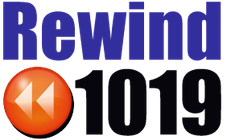The Impact of Habitat Loss on Wildlife
Habitat loss is probably the greatest threat to the biodiversity on Earth today. It is identified as the main threat to 85% of all species described in the IUCN's Red List. VETPAW reviews the three categories of habitat loss, its impact on wildlife, and its causes.
Habitat loss poses major risks to wildlife such as:
- Preventing safe animal movement across the landscape
- Restricting expression of normal behaviors
- Denying animals’ access to basic needs such as food, water, and shelter.
- Causing stress, injury, illness, pain, psychological distress, and death
- Reducing genetic diversity
- Impacting population abundance
Habitat loss affects not only biodiversity but also impacts humans by decreasing the production of ecosystem goods and services such as pollination and soil and water management.
Habitat loss can be categorized into three types:
1. Habitat destruction: Habitat destruction is the process by which a natural habitat is damaged or destroyed to such an extent that it no longer is capable of supporting the species and ecological communities that naturally occur there. It usually leads to the extinction of species and a consequent loss of biodiversity. Mass deforestation by cutting down trees is a prime example of this.
2. Habitat fragmentation: This kind of habitat loss alters the land in a way that confuses the animals and disrupts their natural way of living. Roads in the middle of woodlands and other natural areas are an example of this.
Fragmentation separates animals from one another and their food sources; reduces animal population and genetic diversity by isolating species from one another; restricts movement and migration for survival purposes; and places animals in these areas at higher risk of extinction.
3. Habitat degradation: This is another consequence of human development. Pollution, climate change, and the introduction of invasive species reduce the quality of the environment, making it difficult for native plants and animals to thrive. Degraded lands are frequently lost to erosion, desertification, and nutrient depletion. This degradation allows non-native species to invade the ecosystem and contribute to the downfall of other animals and plants.
Causes of habitat loss
1. Agriculture: Around half of the world's original forests have disappeared, and are being depleted at a rate 10x higher than any possible level of regrowth. As tropical forests contain at least half the Earth's species, the clearance of approximately 17 million hectares per year is a drastic loss. With the rising human population, there is increasing pressure to redevelop conservation lands for high-priced food and biofuel crops. Increasing food production is a major reason driving the conversion of natural habitat into agricultural land.
2. Land for development: Again the expanding population is increasing the need for the conversion of lands to housing developments, roads, office parks, strip malls, parking lots, and industrial sites.
3. Water development: Humans have built dams and other water diversions that disconnect waters, changing hydrology and water chemistry. This prevents nutrients from flowing downstream and deprives the native species of their feed.
4. Pollution: Pollutants such as untreated sewage, mining waste, acid rain, fertilizers, and pesticides concentrate in rivers, lakes, and wetlands and eventually end up in estuaries and the food chain. These impact freshwater wildlife the most.
5. Climate change: Climate change is disrupting the temperatures and sea levels that are needed for the survival of species. Up to 50% of species are forecast to lose most of their suitable climate conditions by 2100 under the highest greenhouse gas emissions scenario. Climate change is emerging as the driver of habitat and biodiversity loss.
VETPAW aspires to create awareness about habitat loss in its efforts to conserve wildlife. All the factors that lead to habitat loss must be addressed to delay or prevent the loss of wildlife and biodiversity.
VETPAW - Veterans Empowered to Protect African Wildlife
Founded in 2013, VETPAW is a non-profit organization and a community of US war veterans dedicated to protecting African wildlife and training local African rangers in the war against poaching.
Visit VETPAW.org or call at (929) 269-5329 to make a contribution or volunteer for sustainability and wildlife conservation.

























